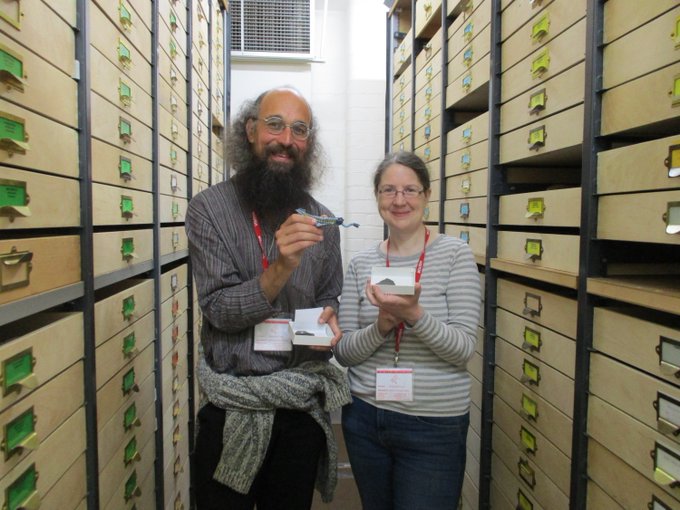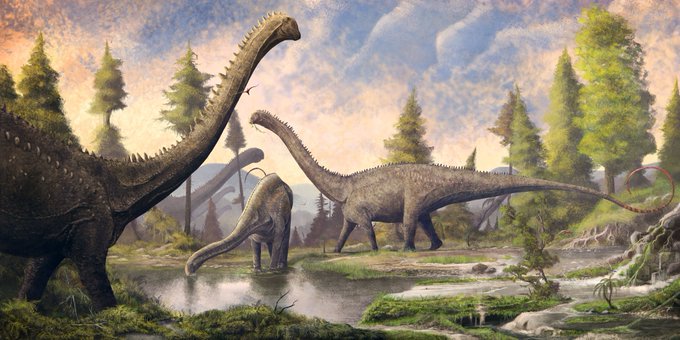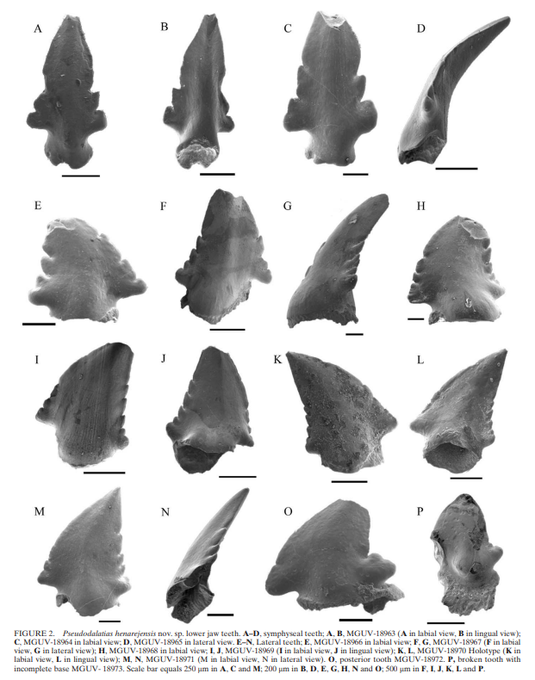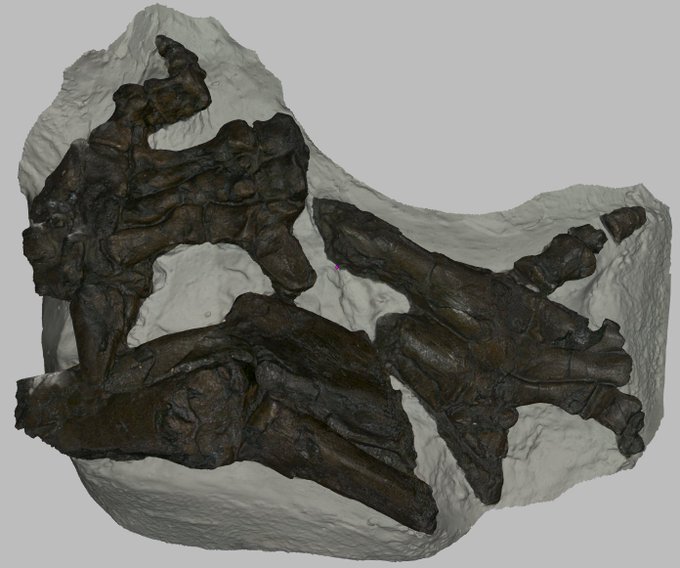FOSSILFRIDAYのTwitterイラスト検索結果。 1,209 件中 4ページ目
Our skulls contain many of the same bones as extinct dinosaurs. See human and Spinosaurus below for comparison. One major difference is that mammal skulls have a much greater degree of fusion than dinos - which is why dinosaur skulls are often found disarticulated.
#FossilFriday
Happy #FossilFriday - Just published - A transitional species of #Daspletosaurus Russell, 1970 from the Judith River Formation of eastern #Montana
Read the full article https://t.co/HWid3M9T79
#EvolutionaryStudies #Paleontology #Taxonomy
Well seeing as we're all still here on #FossilFriday, here's some vaguely organized thoughts on reconstructing the largest, latest surviving Brontotheres 🧵
For what may be the last #FossilFriday on Twitter, large vertical structures interpreted as lungfish burrows from Catskill Fm. (Late Devonian) in Pennsylvania: L -> R: burrow tops; lateral view of burrow fill; illustration of burrow forms & lungfish in mucus cocoon. #ichnology
This #FossilFriday introducing Jarudia: Rethinking the corystosperm concept. @FieldMuseum #Paleobotany https://t.co/ZvYFMUrmQs
An exciting new Welsh fossil discovery from two of our Honorary Research Fellows for #FossilFriday! 460 million year old Mieridduryn bonniae may be the youngest Opabinia-like animal ever found by over 40 million years, and the first from outside N America https://t.co/YzNxcK5u00
It's my first #FossilFriday on https://t.co/Fke6j4ZuQF, so it's time to post some sauropodomorph #paleoart! Here's Giraffatitan at the beach (2021), my Diplodocus mural for the Dorset Dippy exhibit (2019), Plateosaurus with flies (2020) and Shingopana with termites (2017).
#temnovember2022 day 11: Jammerbergia
Was this the only #temnospondyl starting with "J"?, yes; Does makes it less interesting?, nah; So here we have #Jammerbergia, a #mastodonsaurid from the Triassic of Africa
#paleoart #sciart #amphibian #temnovember #triassic #FossilFriday
#temnovember2022 day 4: Dendrerpeton
For the fourth day of #temnovember we have one of the most basal and ancient #temnospondyl s, #Dendrerpeton from late carboniferous of North America
#paleoart #sciart #temnospondyl #amphibian #carboniferous #fossilfriday
For #FossilFriday here's a Triassic enigma that I got more insight on while researching Hessinodon: Pseudodalatias
Despite being 180 ma older and of a completely different lineage from Dalatias, it has very similar teeth, down to how they are shed (the entire row at once!)
For #FossilFriday here are images from our new paper on the ornithomimosaurs that inhabited Mississippi in the Late Cretaceous (~84-85 million years ago).
One of the ways we distinguished the larger- & smaller-bodied species was by using bone histology to track their growth.
A #FossilFriday retweet of our paper on deuterostome origins that came out this week. How can you link these monsters together in a single evolutionary framework? Short answer: with a lot of head scratching and whisky. Long answer: check out the paper. https://t.co/dRbaP9ZlO9
Meet Hylaecullulus fordi - also known as the 'dumbbell' - a 560 million year old animal from #CharnwoodForest🌳
The name combines the Greek word 'cullulus' - a goblet🍷, with 'hylaeos' meaning from the woods🌳
Reconstruction by Martin Lisec/Mighty Fossils
#FossilFriday
#Dinosaur “mummy” secrets revealed #FossilFriday
https://t.co/Yp3bpHx6XO
We bring great news for #FossilFriday … #EJIP and #IMERP are back and they will be held together for the 2nd time! Next edition will be between the 11 and 15 of April of 2023 at Lourinhã, Portugal. Check the first circular in the following link:
https://t.co/SJo7Nn9G5p
#FossilFriday Scanning the Iguanodons of Bernissart also implies the specimens preserved in their original fossilisation posture! It requieres some acrobatics among the skeletons but the obtained models are worth it! With @errequad at @RBINSmuseum
Daliansaurus liaoningensis is a ~1m troodontid unique among Paraves due to having two elongated sickle-like claws instead of one, at 2nd and 4th pedal digits ("similar" to Balaur bondoc, which has them at 1st and 2nd pedal digits).
#Paleoart #FossilFriday #dinosaur #sciart
Don't celebrate #FossilFriday too loud: you'll startle this tiny, tiny baby Scleromochlus. (#Paleoart from 2019)
On October 21st, you will see how frontal sinuses have evolved in humans. A new teaser for your next paper!
#FossilFriday
@MNHN_recherche
And - whew - one more piece of #paleoart for #FossilFriday: a take on the famous Fossil Forest of the @jurassic_coast. As usual, the high-res is located on Patreon along with loads of other essays, artworks and videos. https://t.co/2LHOPQ1xeY

























































